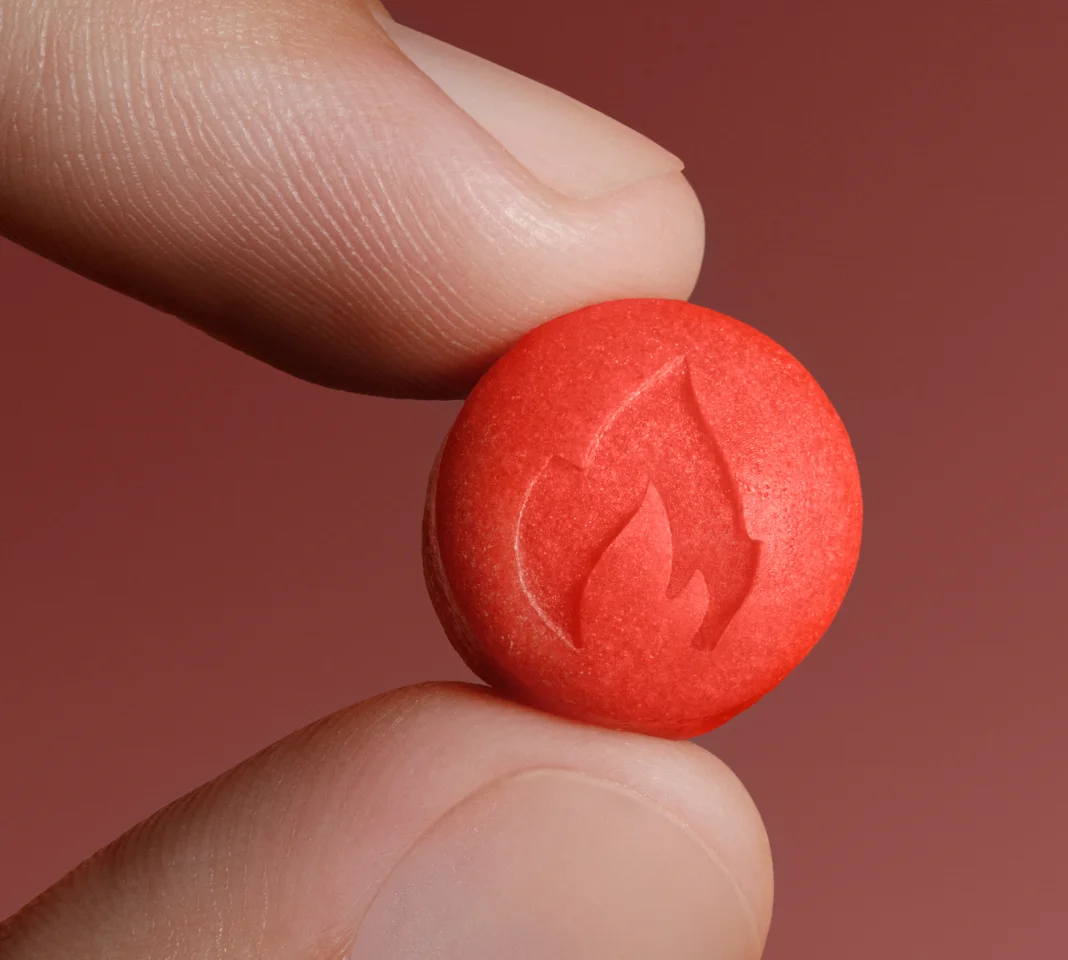Key takeaways
Blue balls is a slang term for a real condition, epididymal hypertension.
Epididymal hypertension causes temporary discomfort that occurs when you experience sexual arousal without release (orgasm).
Here's what we'll cover
Here's what we'll cover
Here's what we'll cover
Key takeaways
Blue balls is a slang term for a real condition, epididymal hypertension.
Epididymal hypertension causes temporary discomfort that occurs when you experience sexual arousal without release (orgasm).
Have you ever been so aroused and for such a long time that, well, it actually hurts? If so, you may have experienced blue balls. And when this happens, you may wonder whether blue balls are real. The term has been thrown around so much as slang for sexual frustration that it's almost achieved mythical status.
But the truth is epididymal hypertension, known colloquially as blue balls, is a real condition. Luckily, while it can be pretty uncomfortable, it's usually a harmless and temporary experience.
What are blue balls?
"Blue balls," also known as epididymal hypertension, is an uncomfortable condition that results from having an erection for a prolonged period of time without ejaculation.
Blue balls can occur any time there is prolonged arousal without orgasm—whether during sexual activity with a partner, during an extended masturbation session without ejaculating (sometimes called edging), or during a prolonged period of mental or emotional arousal.
While blue balls are a very real phenomenon, little has been written about them in medical journals. A literature review reveals very few journal articles written about this condition. Additional research would undoubtedly be beneficial to help understand more about this common phenomenon.
What are the symptoms of blue balls?
Symptoms of blue balls vary from person to person. Some may describe them as mild, while others experience moderate to severe symptoms such as:
Swollen, slightly enlarged scrotum, where testicles are located
Aching or throbbing sensation in the scrotum
Heaviness or pressure in the groin area
Dull ache in the lower abdomen
Restlessness
What causes blue balls?
During an erection, dozens of blood vessels in the penis fill with blood, causing the penis to elongate and harden. Not many people realize it, but something similar happens in the testicles during an erection, too. As blood flow increases, they increase slightly in size. After orgasm (or a decline in arousal if orgasm doesn’t occur), the blood flows from the penis and testicles back into the body.
But when that excess blood stays in the genitals for a long time without being released, that increased blood pressure (the "hypertension" part of “epididymal hypertension”) sticks around. This prolonged pressure in the penis and testicles can get painful, leading to an ache in the testicles, not so fondly known as blue balls.
Other causes of testicular pain
Aside from epididymal hypertension, several other conditions cause testicular pain, some of which can be serious and require immediate medical attention. Possible causes of testicular pain include:
Epididymitis: Inflammation of the coiled tube (epididymis) at the back of the testicle that carries sperm. Sexually transmitted bacterial infections, such as gonorrhea and chlamydia, are the most common cause of epididymitis in a younger population. Symptoms include testicular redness, pain, swelling, and tenderness. Some people also experience pain during urination or an increase in urination frequency.
Testicular torsion: Occurs when the spermatic cord that supplies blood to the testicle twists or rotates around it, cutting off its blood flow. Symptoms include sudden, severe pain in the affected testicle, a red or dark-colored scrotum, a swollen (enlarged) scrotum, nausea, and vomiting. Testicular torsion is a medical emergency that requires prompt treatment to save the testicle so if you are in doubt, you are better off seeking emergency medical attention.
Inguinal Hernia: Also known as a groin hernia, an inguinal hernia develops when part of the abdominal contents, such as the intestine, pushes through a weak spot in the lower abdominal wall. With an inguinal hernia, you may notice a bulge in the area between your lower abdomen and thigh, a bulge in your scrotum, pain in your scrotum, heaviness, or other sensations in the groin area. A hernia can be an emergency if the intestinal contents get stuck, causing that part of the intestines to lose their blood supply.
Kidney stones: A kidney stone is a hard deposit of minerals that forms in the kidney. When passing through or stuck in the urinary tract, a kidney stone can cause pain that radiates to the scrotum and groin. Other symptoms include difficulty urinating, nausea, and vomiting.
Priapism: A priapism is a prolonged erection lasting over 4 hours is considered an emergency and needs evaluation by a healthcare provider.
Contact your healthcare provider immediately if you experience severe testicular pain or testicular pain that lasts several hours, comes and goes, or is accompanied by:
Fever
Nausea or vomiting
Swelling of the scrotum
Abdominal pain
Frequent or bloody urination
If you are unsure about the cause of your testicular pain, it’s better to get evaluated than not.
How long do blue balls last?
There are no published studies documenting exactly how long blue balls last. Some men may experience discomfort for only a few minutes, while others may experience symptoms for up to three hours.
Again, if you experience discomfort or pain that lasts hours, you should contact a healthcare professional to ensure your symptoms are actually due to blue balls and not a more serious condition that requires treatment.
Can women get blue balls?
People with vaginas can experience blue balls, too, though it goes by different names, including “blue clit,” “blue vulva,” or “pink pelvis.” The clitoris is packed with blood vessels that cause it to swell with sexual arousal. As occurs with the testicles, the vulva may also experience a small amount of engorgement with sexual arousal. If there is no orgasm to relieve the engorgement of the clitoris or vulva, then women might feel symptoms similar to blue balls, including:
Heaviness or aching in the vulva or clitoris
Itching sensations
Discomfort or pressure in the vulva or clitoris
How to treat blue balls
The discomfort you experience with blue balls is a natural response to sexual arousal without release. The good news is there's no need for medical intervention for the most part, and there are several ways to find relief:
Ejaculation: The most straightforward way to resolve the discomfort is to achieve orgasm through masturbation, sexual intercourse, or other forms of sex with a consenting partner. This relieves built-up tension, and symptoms typically fade quickly afterward.
Distraction: If achieving orgasm isn't an option, diverting your attention can be helpful. Engaging in non-arousing activities like exercising, watching a movie, playing a game, or listening to music can take your mind off the discomfort and allow your body to calm down.
Relaxation techniques: Techniques like deep breathing or meditation can help reduce overall tension and discomfort. Focus on slow, deep breaths and progressive muscle relaxation to help your body unwind.
Cooling down: A cool shower or bath can help relieve achiness and discomfort.
Urinating: Emptying the bladder through urination may relieve pressure in the groin.
Remember, the discomfort associated with blue balls is temporary and should subside within a few hours. If the pain is severe or persists, it's important to see a healthcare provider to rule out other potential causes of testicular pain.
DISCLAIMER
If you have any medical questions or concerns, please talk to your healthcare provider. The articles on Health Guide are underpinned by peer-reviewed research and information drawn from medical societies and governmental agencies. However, they are not a substitute for professional medical advice, diagnosis, or treatment.
References
Chalett, J. M. & Nerenberg, L. T. (2000). "Blue Balls": A Diagnostic Consideration in Testiculoscrotal Pain in Young Adults: A Case Report and Discussion. Pediatrics, 106(4), 843–843. doi: 10.1542/peds.106.4.843. Retrieved from https://pubmed.ncbi.nlm.nih.gov/11015532/
Laher, A., Ragavan, S., Mehta, P., & Adam, A. (2020). Testicular Torsion in the Emergency Room: A Review of Detection and Management Strategies. Open Access Emergency Medicine: OAEM, 12, 237–246. doi:10.2147/OAEM.S236767. Retrieved from https://www.ncbi.nlm.nih.gov/pmc/articles/PMC7567548/
Levang, S., Henkelman, M., Neish, R., et al. (2023). "Blue balls" and sexual coercion: a survey study of genitopelvic pain after sexual arousal without orgasm and its implications for sexual advances. Sexual Medicine, 11(2), qfad016. doi:10.1093/sexmed/qfad016. Retrieved from https://www.ncbi.nlm.nih.gov/pmc/articles/PMC10155057/
McConaghy, J. R. & Panchal, B. (2016). Epididymitis: An Overview. American Family Physician, 94(9), 723–726. Retrieved from https://pubmed.ncbi.nlm.nih.gov/27929243/
National Institute of Diabetes and Digestive and Kidney Diseases. (2019). Inguinal hernia. Retrieved from https://www.niddk.nih.gov/health-information/digestive-diseases/inguinal-hernia
Panchatsharam, P. K., Durland, J., & Zito, P. M. (2021). Physiology, erection. StatPearls. Retrieved from https://www.ncbi.nlm.nih.gov/books/NBK513278/
Patti, L. & Leslie, S. W. (2024). Acute renal colic. StatPearls. Retrieved from https://www.ncbi.nlm.nih.gov/books/NBK431091/
Schick, M. A. & Sternard, B. T. (2021) Testicular torsion. StatPearls. Retrieved from https://www.ncbi.nlm.nih.gov/books/NBK448199/












